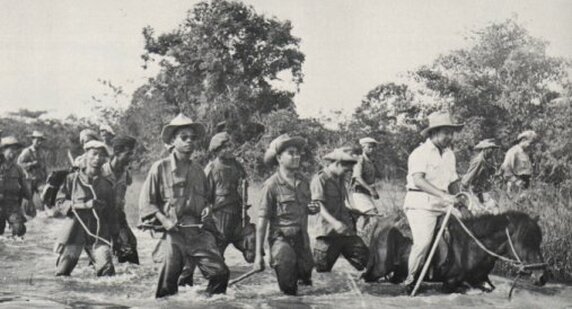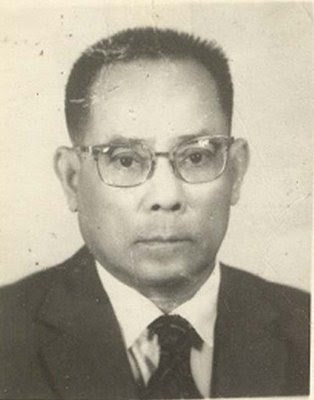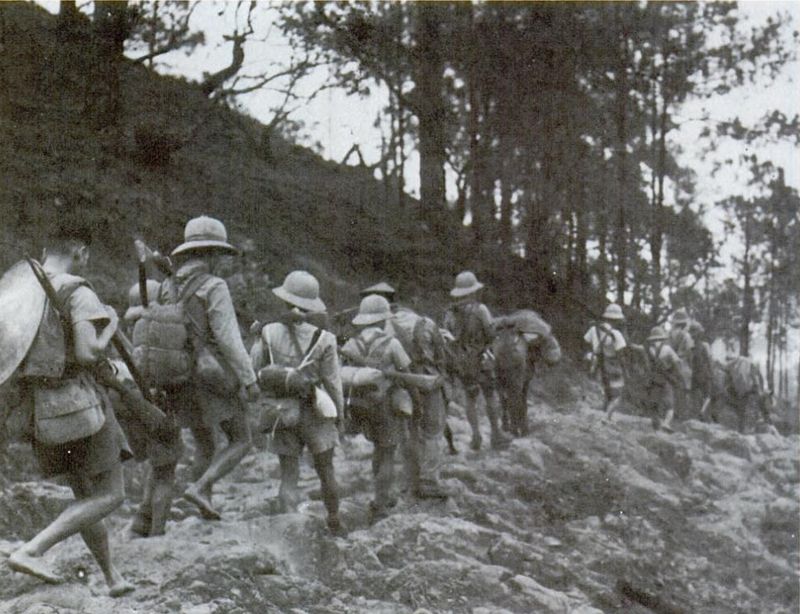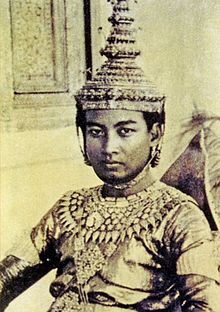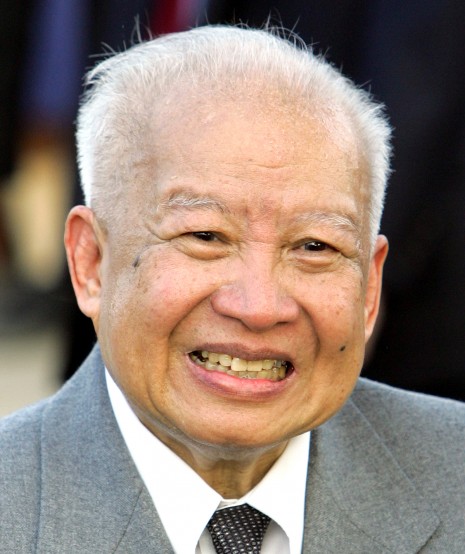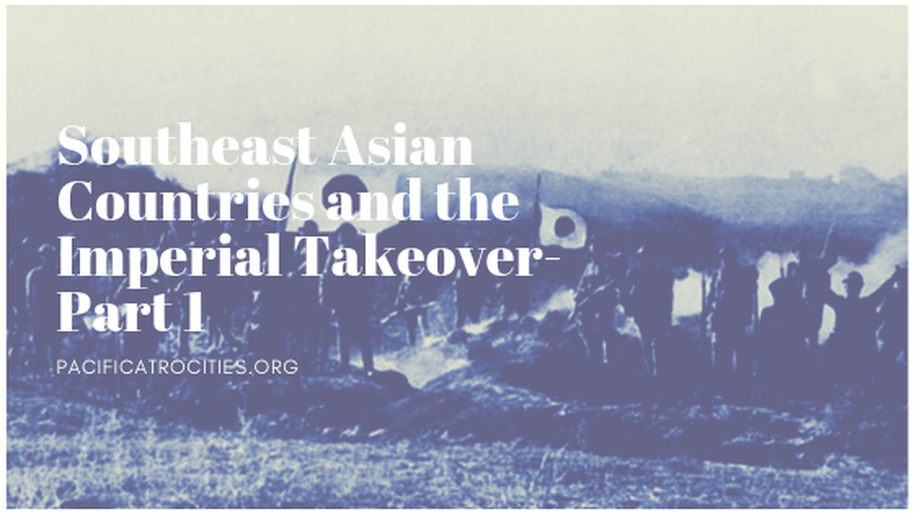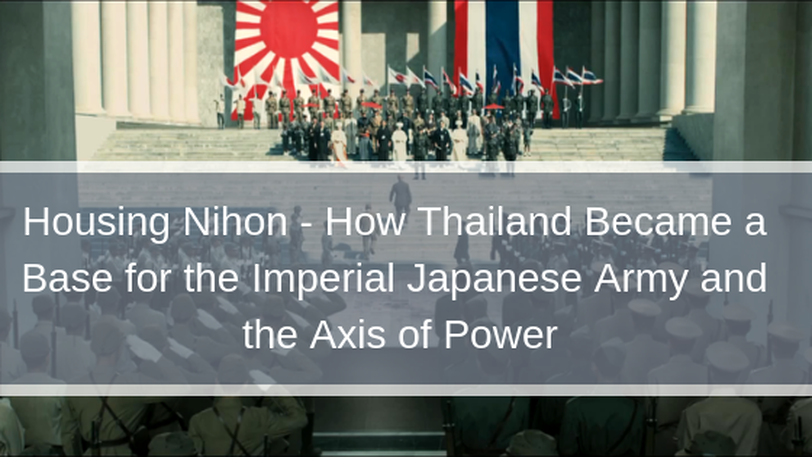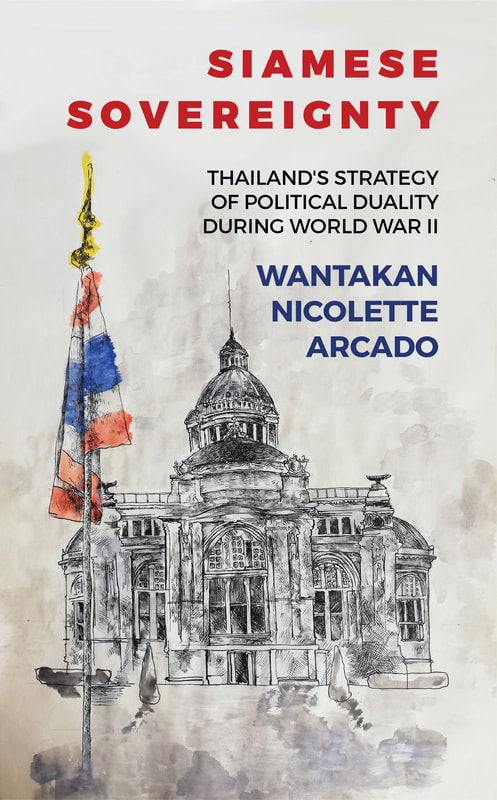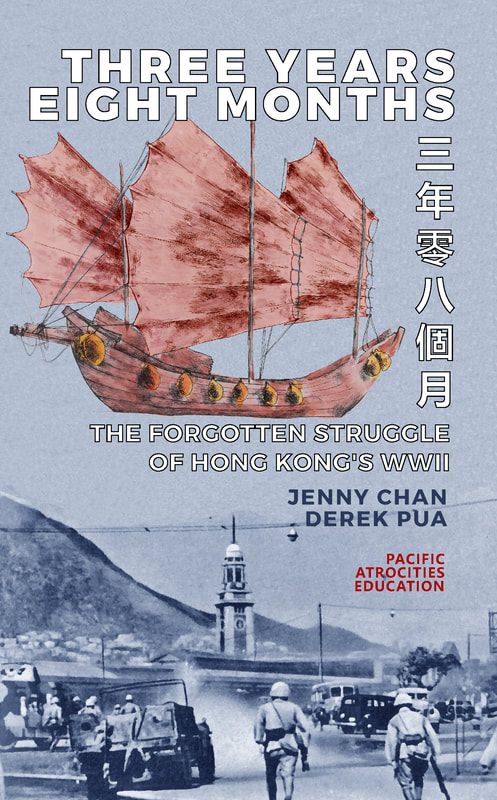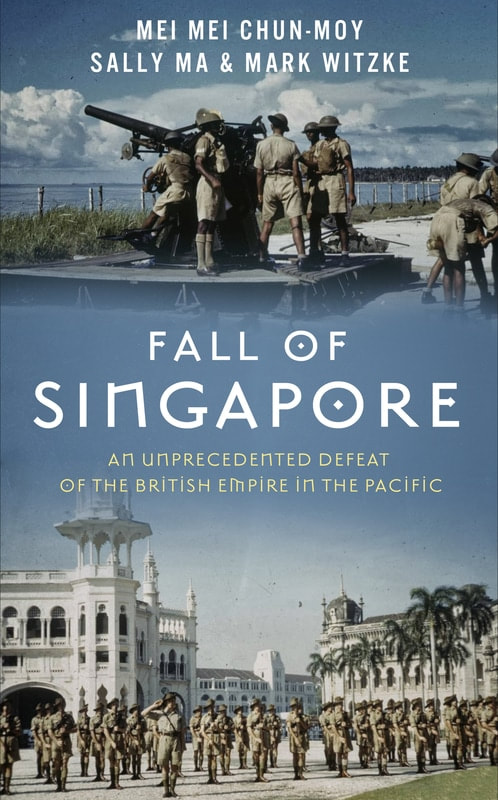|
by Nickii Wantakan Arcado During World War II, various Southeast Asian countries were engulfed by the Imperial Japanese Military as part of their vision to create a Greater East Asia Co-Prosperity Sphere. This is Part II of a IV part series. Outlined below is a brief history of major events during the Cambodian Campaign including the beginning of Japanese colonialism and the eventual conclusion of the war: Operation Cambodia : カンボジア王国 After the fall of France in 1940, the country struggled with maintaining its political and economic hold over Indochina. An event that initially began as Japan’s influence over Cambodia started as Japan tried to mediate over the signing of concessions during and after the Franco-Thai war. The Japanese army hosted a signing ceremony in Tokyo that called on the French regime to relinquish ⅓ of Cambodia’s land to Thailand, totaling to about half a million citizens. These lands, which Thailand claimed were historically theirs, included the provinces of Siem Reap, Koh Kong, Battambang as well as the land between the 15th parallel. Japan then began its operation to infiltrate Indochina in 1941. In August of the same year, the Japanese Army moved 8,000 troop members into Cambodia to establish a military garrison. Despite this intervention, the Imperial Army still chose to keep the French Vichy regime in their administrative posts, and not much movement existed on the political front. Compare to other Southeast Asian counterparts, the Japanese occupation of Cambodia possessed the least amount of bloodshed. 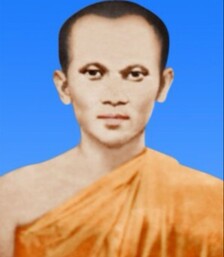 Although Japan did find a receptive audience in Cambodia, one instance of civilian resistance was during the confrontation of the politically active Buddhist monk, Hem Chieu. Hem Chieu was well known for preaching anti-French sermons to Khmer troops as well as his opposition to the French introduction of the Gregorian calendar and romanticization of Khmer scripts (as had been done in Vietnam) in the Cambodian educational curriculum. Recognizing his unwillingness to yield to French authorities, he was arrested and defrocked in July 1942. Leaders and editors of Nagaravatta, the first Khmer language newspaper that was established in 1936, called for his immediate release. This included Pach Chhoeun, and editor at Nagaravatta and Son Ngoc Thanh the founder of the newspaper company. Both Chhoeun and Thanh decided to stage a march in front of the French residency consisting of over 2,000 people, with a majority being monks. Unfortunately, the Japanese did not provide the support the nationalist had hoped for, and Chhoeun was arrested and sentenced of life imprisonment for disobedience towards the French regime. Thanh, on the other hand, was taken to Japan and trained under the Japanese army for three years, eventually rising to become a captain at the Japanese army. That all changed in 1945 with the Meigo Sakusen (Operation Bright Moon), the Japanese coup d'état of Indochina. This historical event was in direct response to the growing military strength of the allied forces (now with the participation of the United States) and the Japanese army’s increase in battle losses. During the coup, all French administrators were relieved of their duties and learning military units were forced to disarm. The imperial army sought to reignite support for Tokyo’s war effort as well as encourage rulers to call for independence in the face of Western colonialism. The Japanese Army pressured young king Norodom Sihanouk to proclaim Cambodia (then, the Kingdom of Kampuchea) an independent state on March 9, 1945. Simultaneously, as the country was now deemed ‘independent’, Sihanouk also served as Prime Minister. Thanh eventually returned back to Cambodia and was made Foreign Minister. King Norodom Sihanouk The independence of Cambodia was short-lived as five months later, the Imperial Japanese army surrendered in August 1945. During this time, Thanh made himself Prime Minister of Cambodia. The puppet state was later dissolved in October 1945, and Thanh again was forced to flee. Then beginning May 1947, King Sihanouk reluctantly proclaimed a new constitution, which reduced him to a mere spiritual figurehead under the system of a constitutional monarchy. It was not until 1953, that Cambodia would gain full independence from the French. References: Hayes, Michael. “The Legacy of Achar Hem Chieu, National, Phnom Penh Post.” The Legacy of Achar Hem Chieu, National, Phnom Penh Post, Post Media Co Ltd 888 Building H, 8th Floor Phnom Penh Center Corner Sothearos & Sihanouk Blvd Sangkat Tonle Bassac 120101 Phnom Penh Cambodia, 2 Oct. 1998, www.phnompenhpost.com/national/legacy-achar-hem-chieu. Cambodia - The Japanese Occupation, 1941-45, www.country-data.com/cgi-bin/query/r-2221.html. Pike, John. “Military.” Japanese Occupation - 1940-1945, www.globalsecurity.org/military/world/cambodia/history-japan.htm. Related ArticlesRelated Books
0 Comments
Leave a Reply. |
- Home
- Stories
-
Internship
- Summer 2024 Internship
- Summer 2023 Internship
- Fall 2022 Internship
- Summer 2022 Internship
- Summer 2021 Internship
- Fall 2020- Spring 2021 Internship
- Summer 2020 Internship
- Fall 2019 Internship
- Summer 2019 Internship >
- School Year 2018-2019 Internship
- Summer 2018 Internship >
- Fall 2017 Internship
- Summer 2017 Internship >
- Books
- Archives
-
Resource Page
-
Supplementary Research Guides
>
- Unit 731 - Guide >
-
Philippines' Resistance - Guide
>
- Philippines World War II Timeline
- The Japanese Invasion & Conquest of the Philippines
- Bataan Death March
- Formation of Underground Philippines Resistance
- Supplies of the Guerrilla Fighters
- The Hukbalahap
- Hunter's ROTC
- Marking's Guerrillas
- United States Army Forces in the Philippines of Northern Luzon (USAFIP-NL)
- The Aetas
- Chinese and Filipino-Chinese Nationalist Guerrilla Units
- The Female Faces of the Philippine Guerrillas
- Rising Sun Flag - Guide >
- Pinay Guerrilleras - Guide >
- Fall of Singapore - Guide >
- Three Years and Eight Months - Guide >
- Siamese Sovereignty - Guide >
- The Khabarovsk War Crimes Trial - Guide >
- Unit 731 Cover-up : The Operation Paperclip of the East - Guide >
- Marutas of Unit 731 - Guide >
- Prince Konoe Memoir - Guide >
- Competing Empires in Burma - Guide >
- Battle of Shanghai - Guide >
- Ishi Shiro - Guide >
- Taiwan The Israel of the East - Guide >
- Seeking Justice for Biological Warfare Victims of Unit 731 - Guide >
- Rice and Revolution - Guide >
- Clash of Empires - Guide >
-
Hunger for Power and Self-SufficiencyI - Guide
>
- The Influence of War Rations on Post-War Culinary Transformations
- How World War II Complicated Food Scarcity and Invention
- American Military Innovations
- Government-Sponsored Food Inventions in Europe during World War II
- Feeding the Army: The Adaptation of Japanese Military Cuisine and Its Impact on the Philippines
- Mixed Dishes: Culinary Innovations Driven by Necessity and Food Scarcity
-
Denial A Quick Look of History of Comfort Women and Present Days’ Complication - Guide
>
- The Comfort Women System and the Fight for Recognition
- The Role of Activism and International Pressure
- The Controversy over Japanese History Textbooks
- The Sonyŏsang Statue and the Symbolism of Public Memorials
- Activism and Support from Japanese Citizens
- The Future of Comfort Women Memorials and Education
- Echoes of Empire: The Power of Japanese Propaganda - Guide >
- Lesson Plans >
-
Supplementary Research Guides
>
|
Pacific Atrocities Education
730 Commercial Street San Francisco, CA 94108 415-988-9889 |
Copyright © 2021 Pacific Atrocities Education.
We are a registered 501 (c)(3) charity. |
- Home
- Stories
-
Internship
- Summer 2024 Internship
- Summer 2023 Internship
- Fall 2022 Internship
- Summer 2022 Internship
- Summer 2021 Internship
- Fall 2020- Spring 2021 Internship
- Summer 2020 Internship
- Fall 2019 Internship
- Summer 2019 Internship >
- School Year 2018-2019 Internship
- Summer 2018 Internship >
- Fall 2017 Internship
- Summer 2017 Internship >
- Books
- Archives
-
Resource Page
-
Supplementary Research Guides
>
- Unit 731 - Guide >
-
Philippines' Resistance - Guide
>
- Philippines World War II Timeline
- The Japanese Invasion & Conquest of the Philippines
- Bataan Death March
- Formation of Underground Philippines Resistance
- Supplies of the Guerrilla Fighters
- The Hukbalahap
- Hunter's ROTC
- Marking's Guerrillas
- United States Army Forces in the Philippines of Northern Luzon (USAFIP-NL)
- The Aetas
- Chinese and Filipino-Chinese Nationalist Guerrilla Units
- The Female Faces of the Philippine Guerrillas
- Rising Sun Flag - Guide >
- Pinay Guerrilleras - Guide >
- Fall of Singapore - Guide >
- Three Years and Eight Months - Guide >
- Siamese Sovereignty - Guide >
- The Khabarovsk War Crimes Trial - Guide >
- Unit 731 Cover-up : The Operation Paperclip of the East - Guide >
- Marutas of Unit 731 - Guide >
- Prince Konoe Memoir - Guide >
- Competing Empires in Burma - Guide >
- Battle of Shanghai - Guide >
- Ishi Shiro - Guide >
- Taiwan The Israel of the East - Guide >
- Seeking Justice for Biological Warfare Victims of Unit 731 - Guide >
- Rice and Revolution - Guide >
- Clash of Empires - Guide >
-
Hunger for Power and Self-SufficiencyI - Guide
>
- The Influence of War Rations on Post-War Culinary Transformations
- How World War II Complicated Food Scarcity and Invention
- American Military Innovations
- Government-Sponsored Food Inventions in Europe during World War II
- Feeding the Army: The Adaptation of Japanese Military Cuisine and Its Impact on the Philippines
- Mixed Dishes: Culinary Innovations Driven by Necessity and Food Scarcity
-
Denial A Quick Look of History of Comfort Women and Present Days’ Complication - Guide
>
- The Comfort Women System and the Fight for Recognition
- The Role of Activism and International Pressure
- The Controversy over Japanese History Textbooks
- The Sonyŏsang Statue and the Symbolism of Public Memorials
- Activism and Support from Japanese Citizens
- The Future of Comfort Women Memorials and Education
- Echoes of Empire: The Power of Japanese Propaganda - Guide >
- Lesson Plans >
-
Supplementary Research Guides
>

